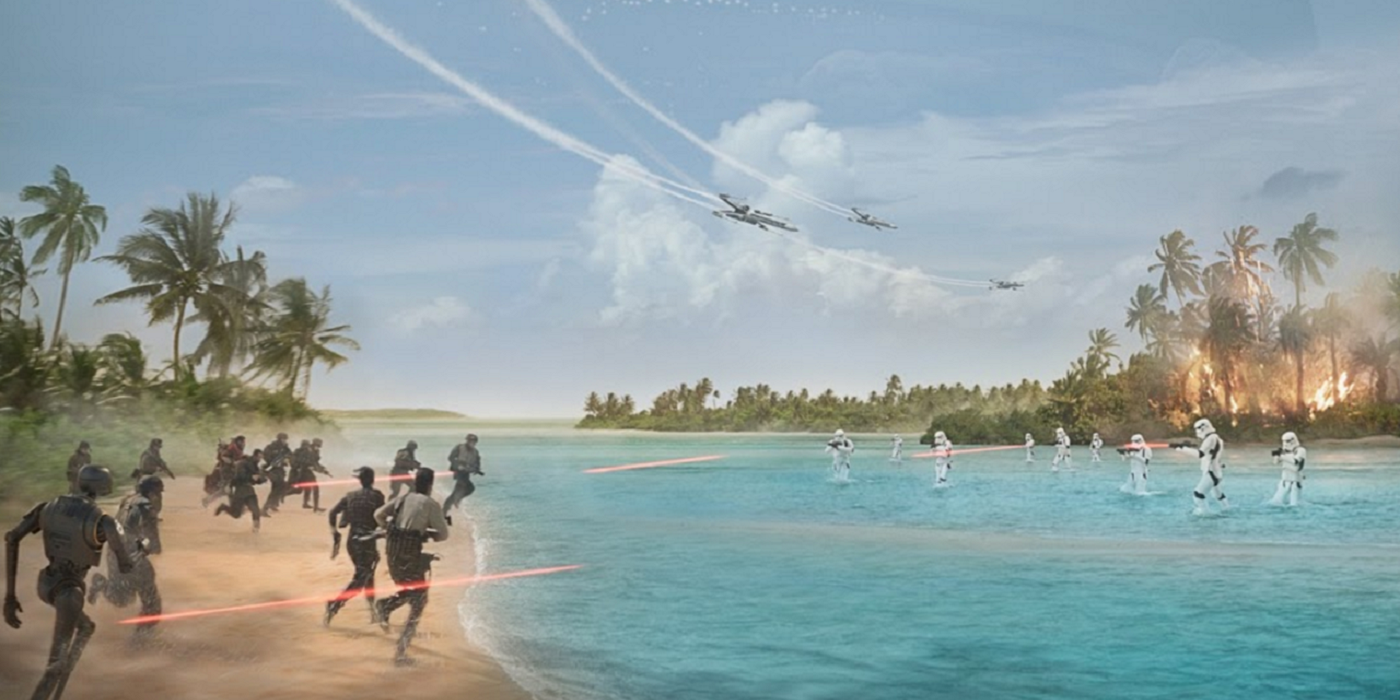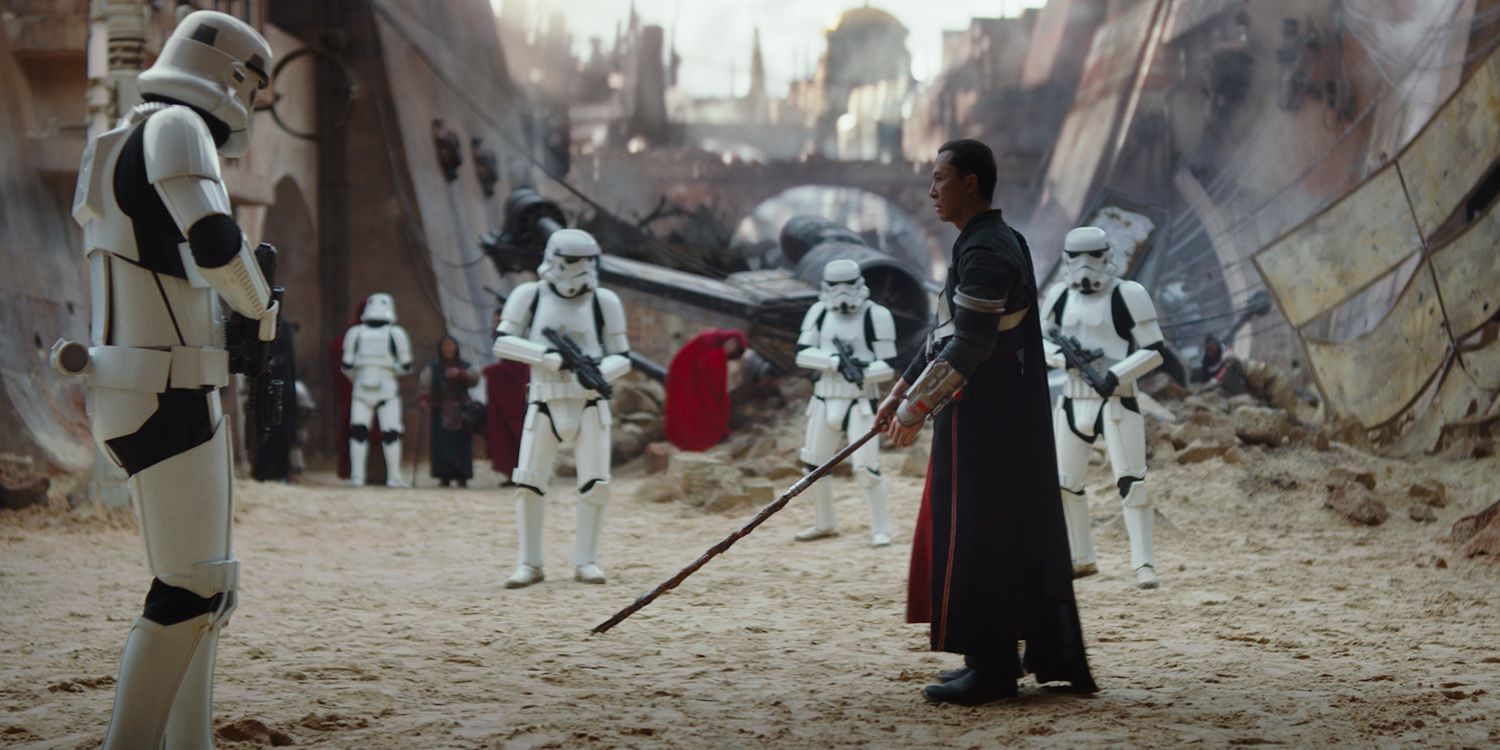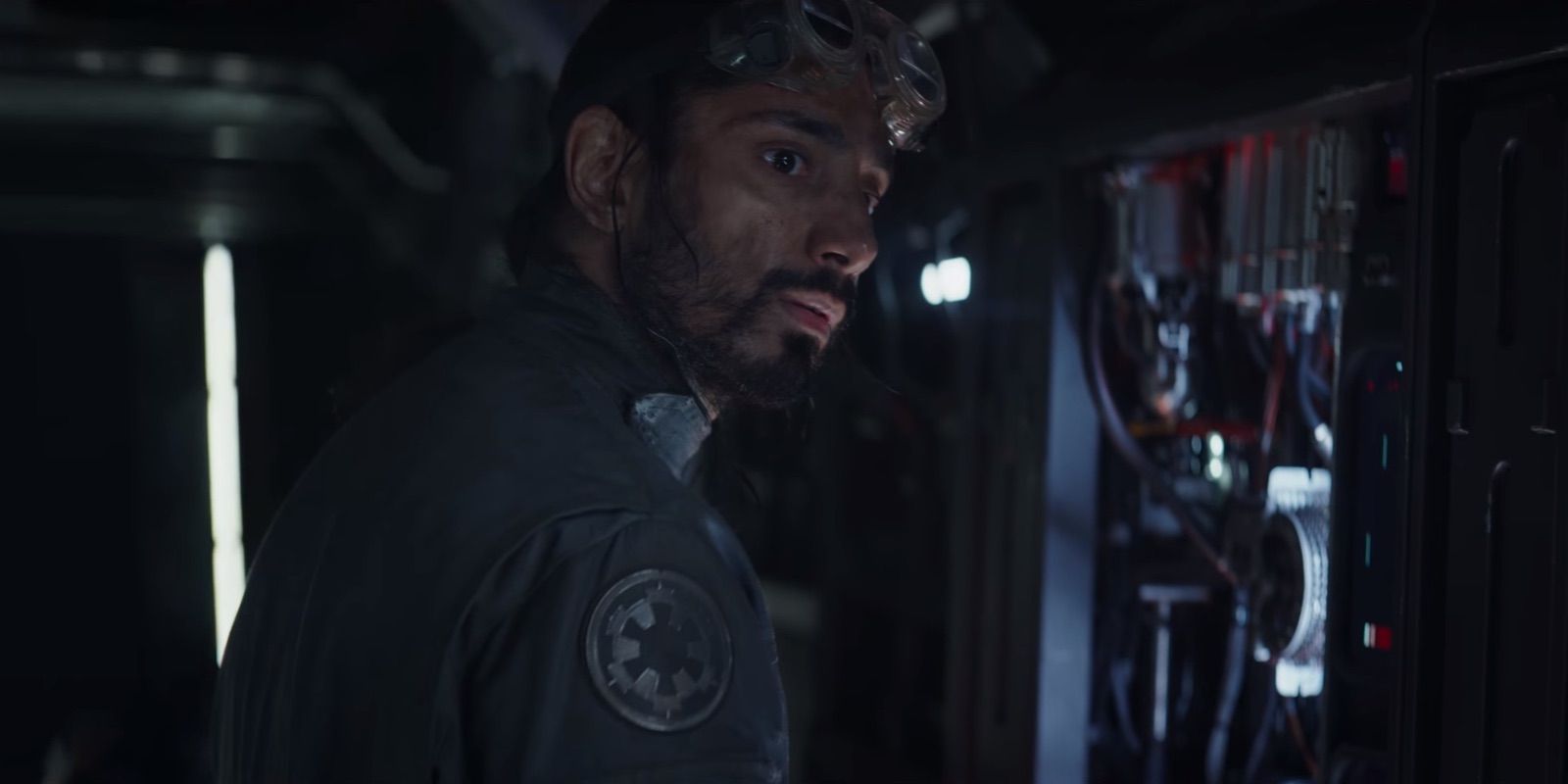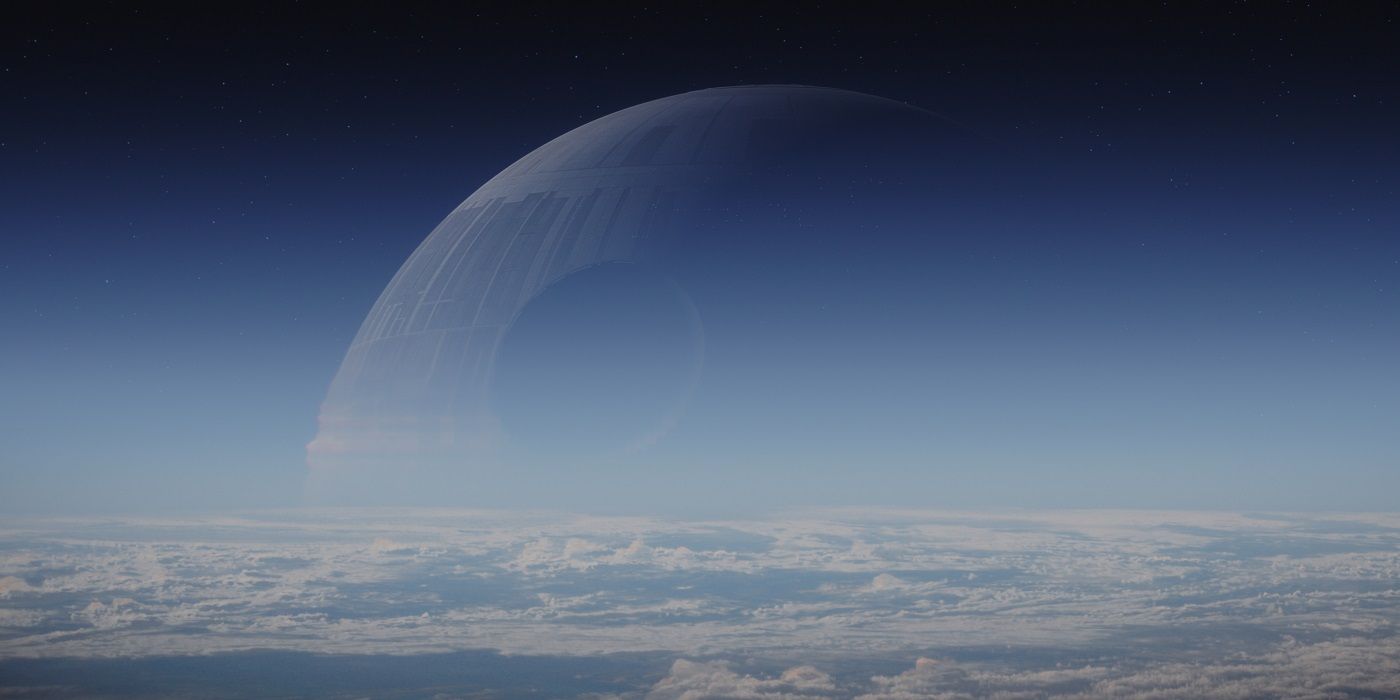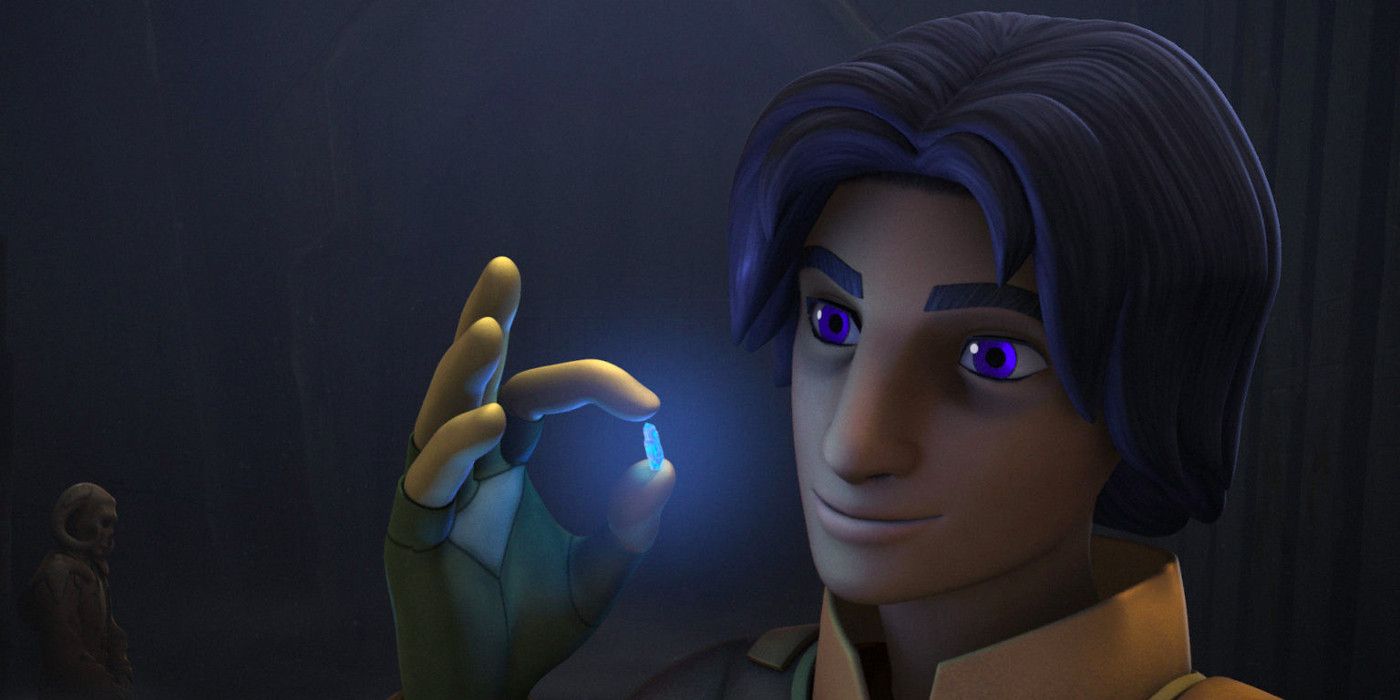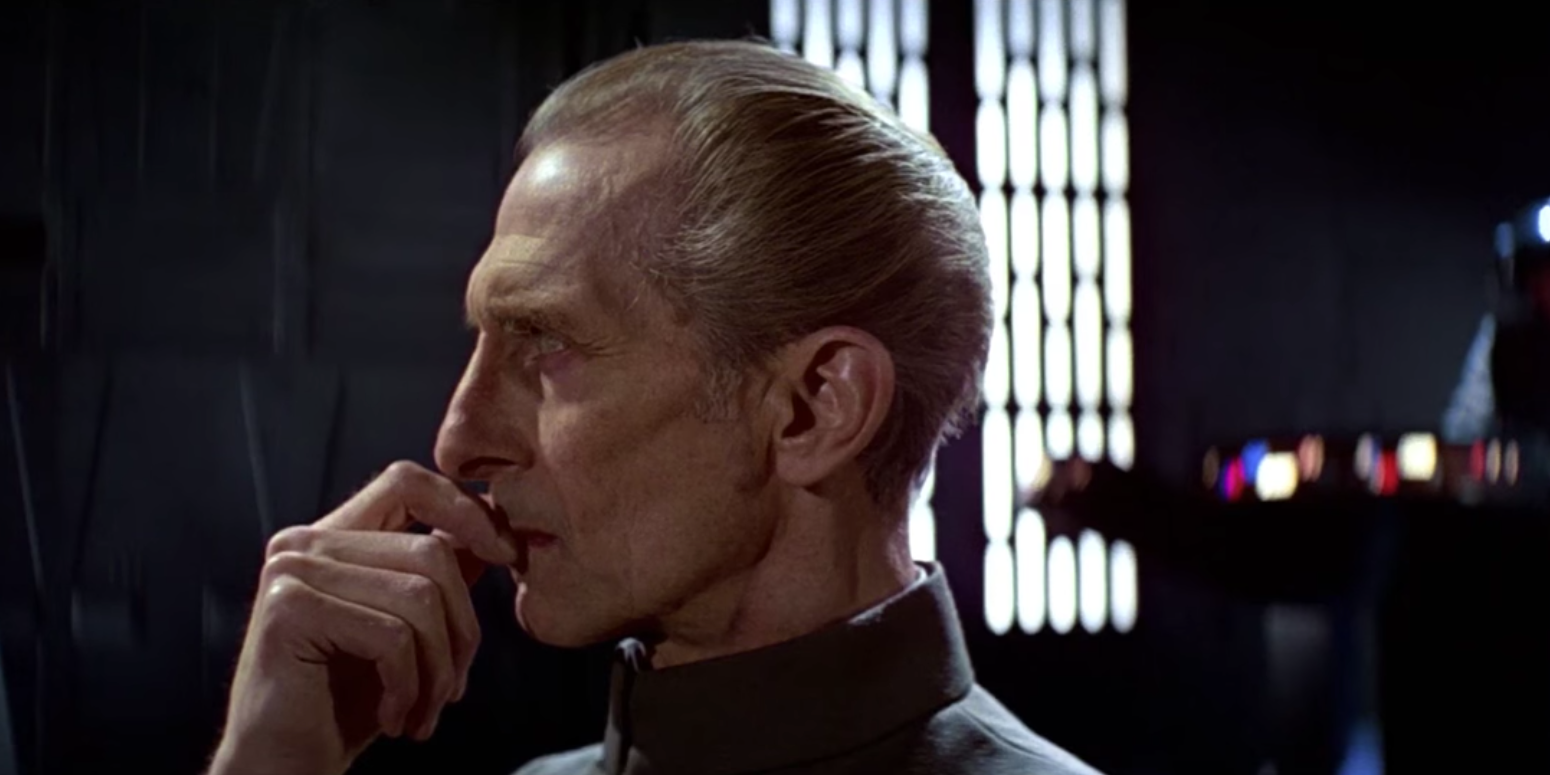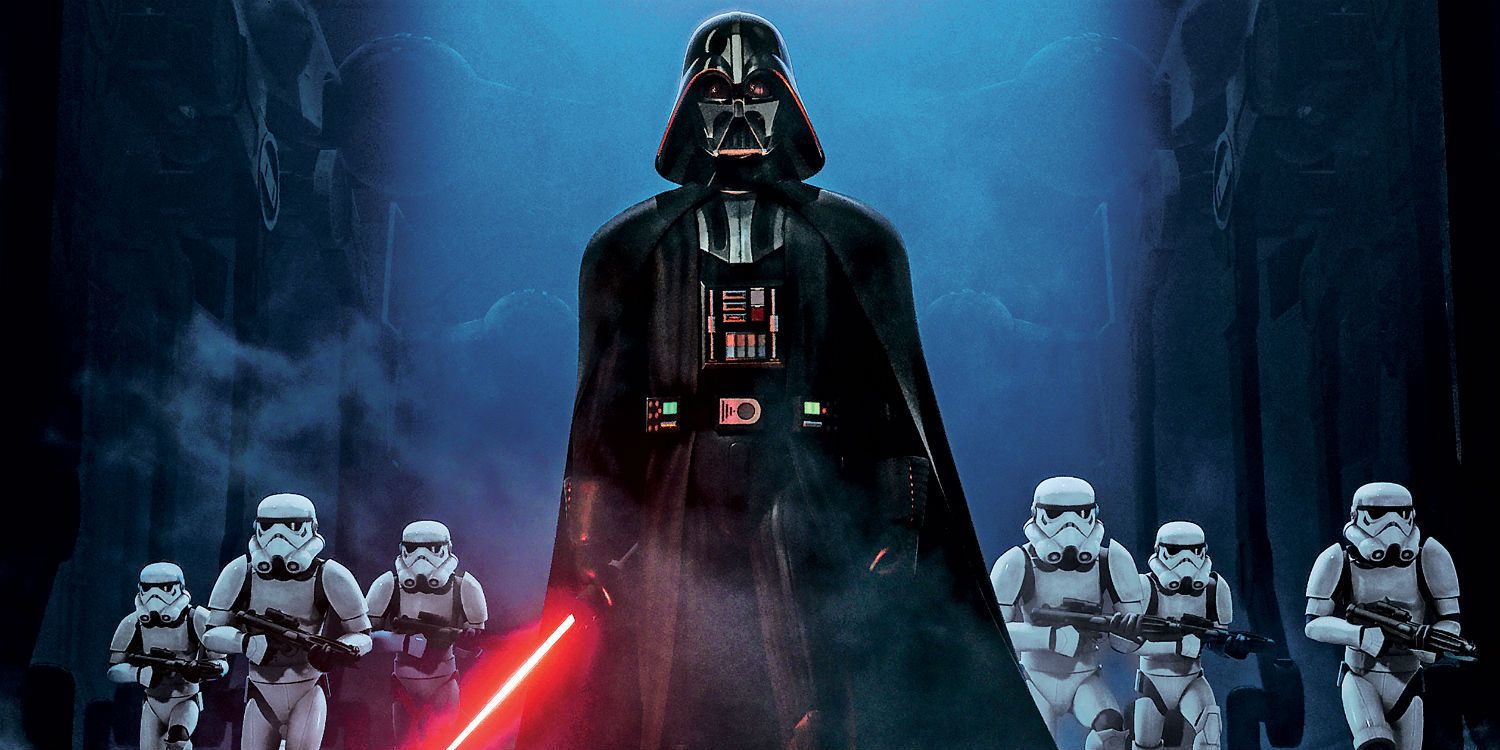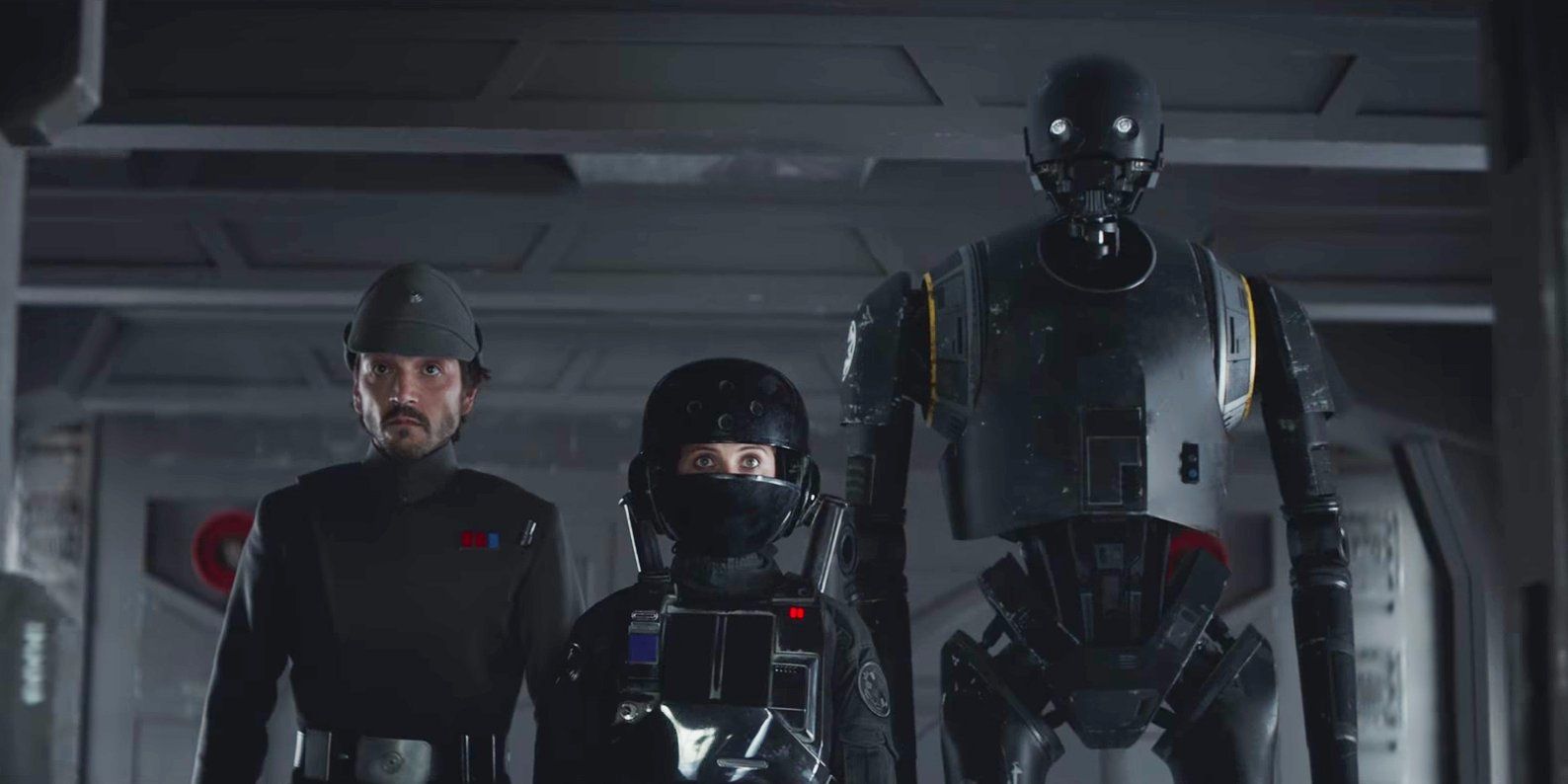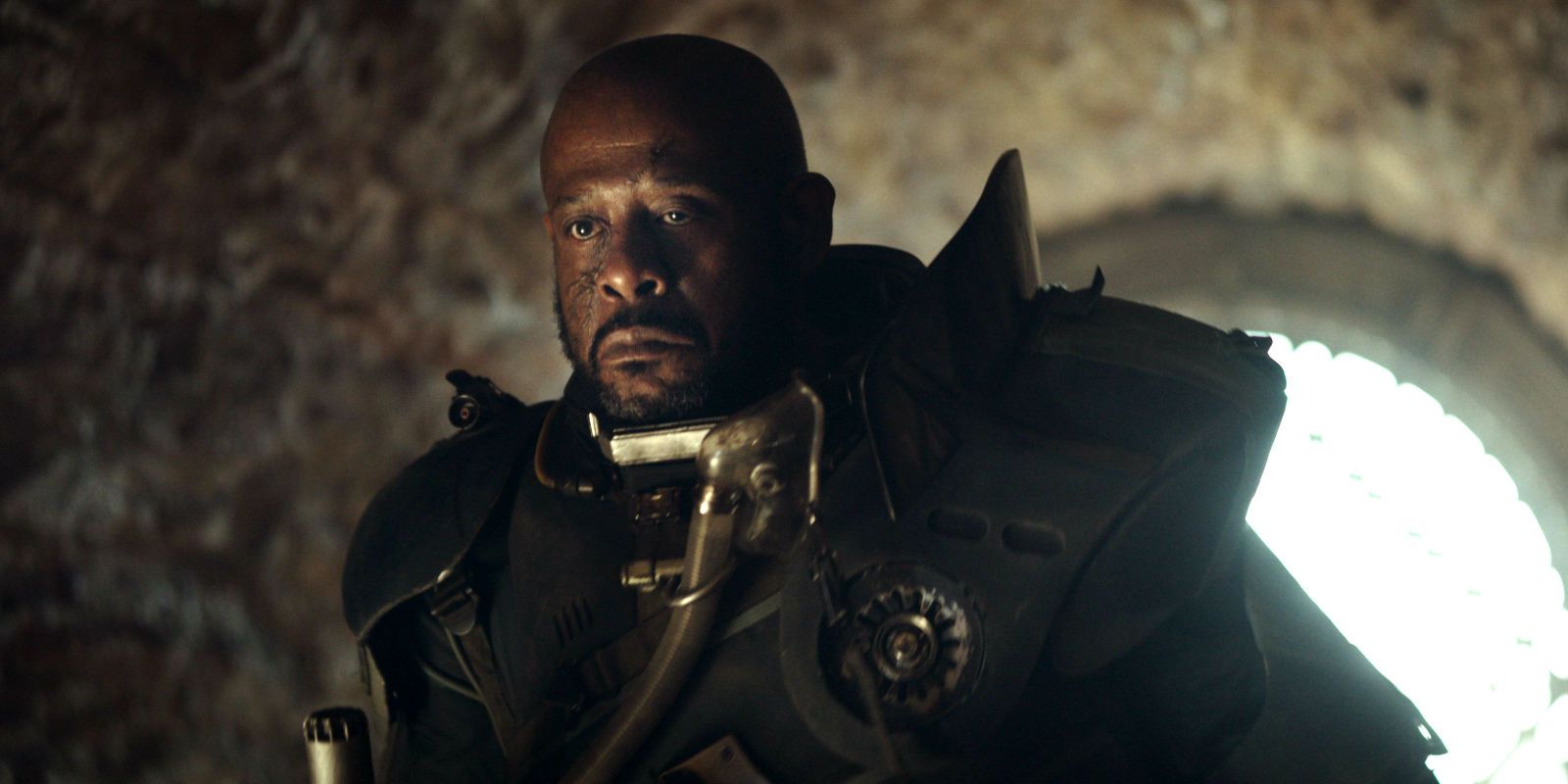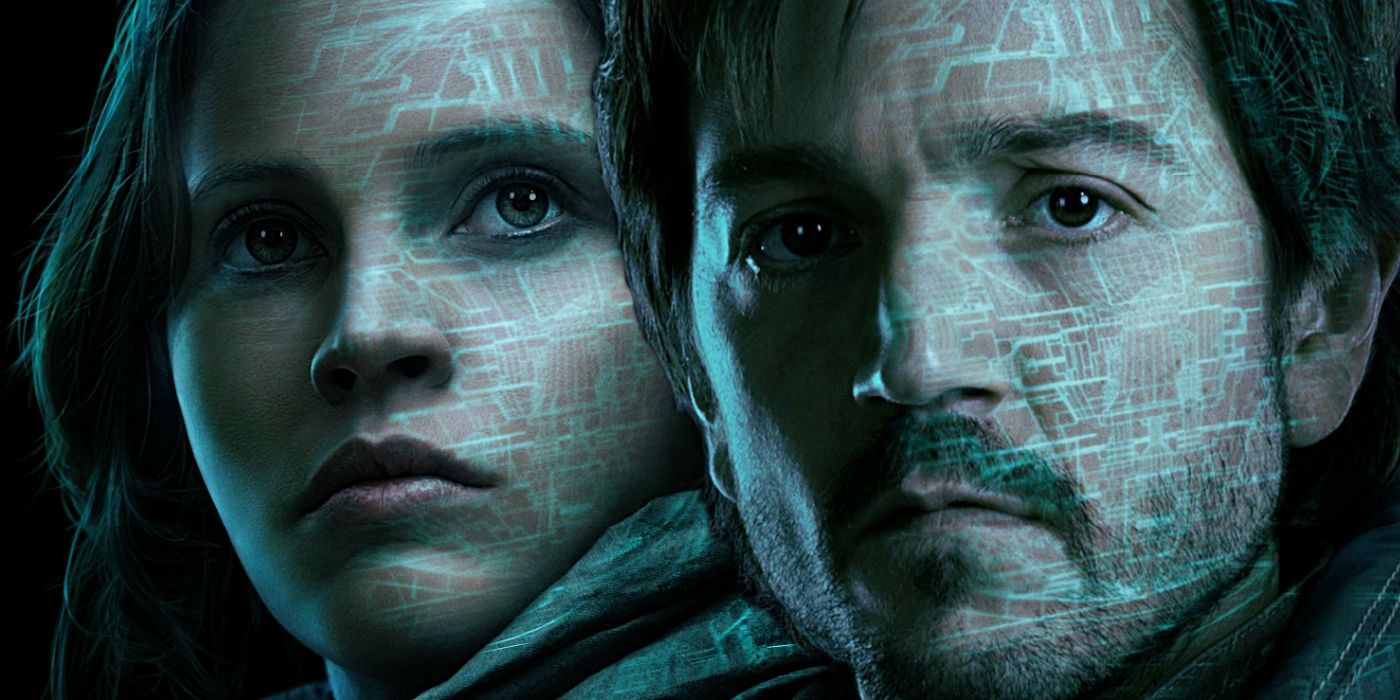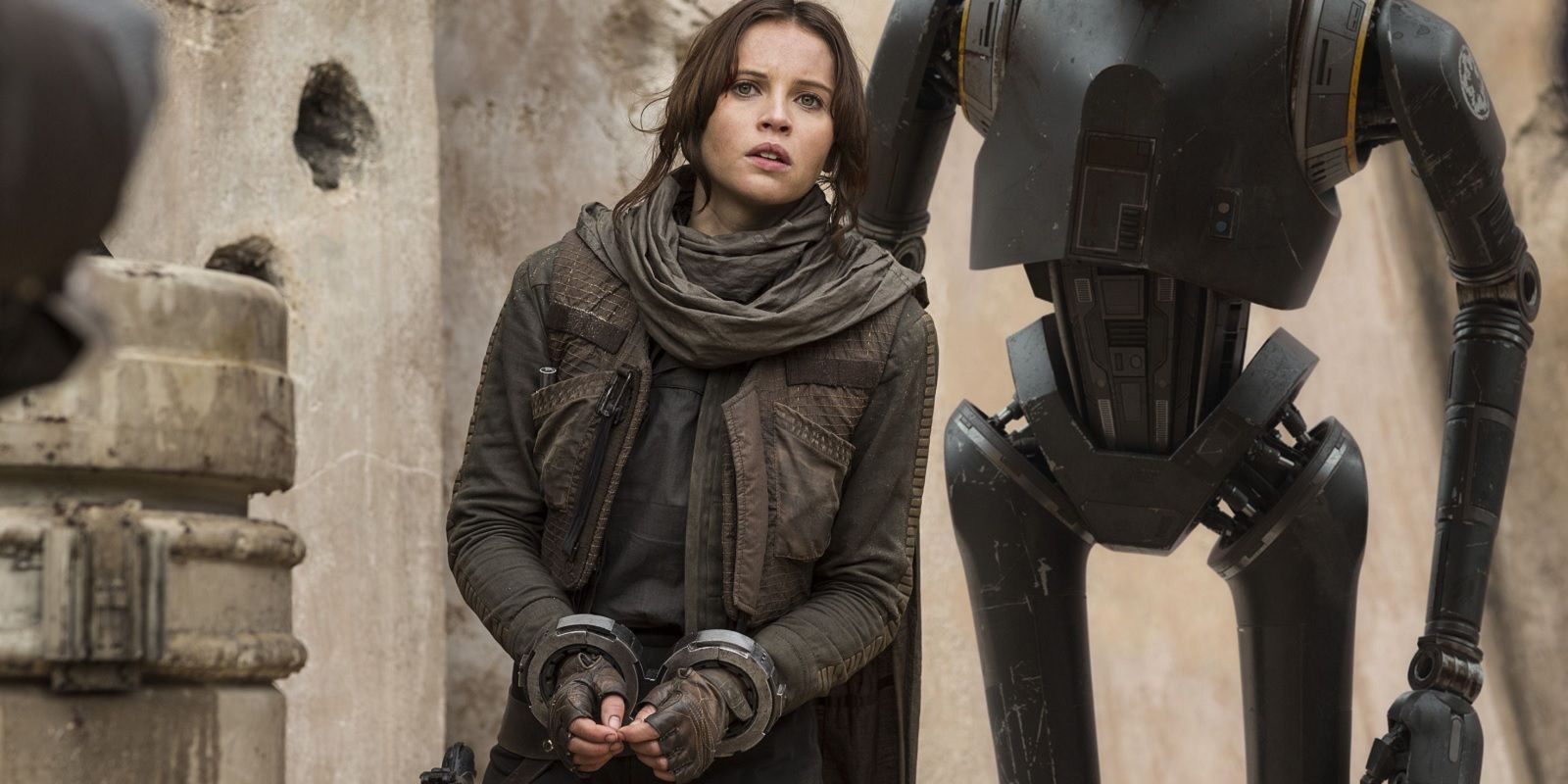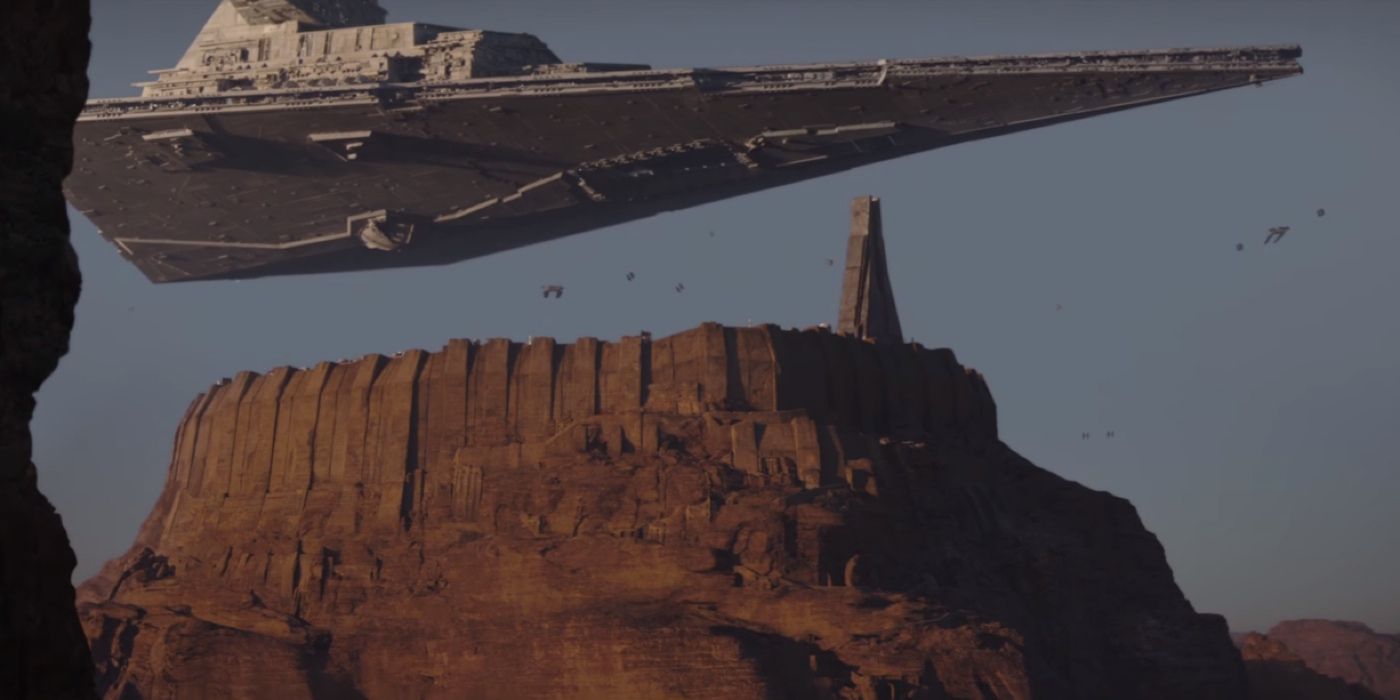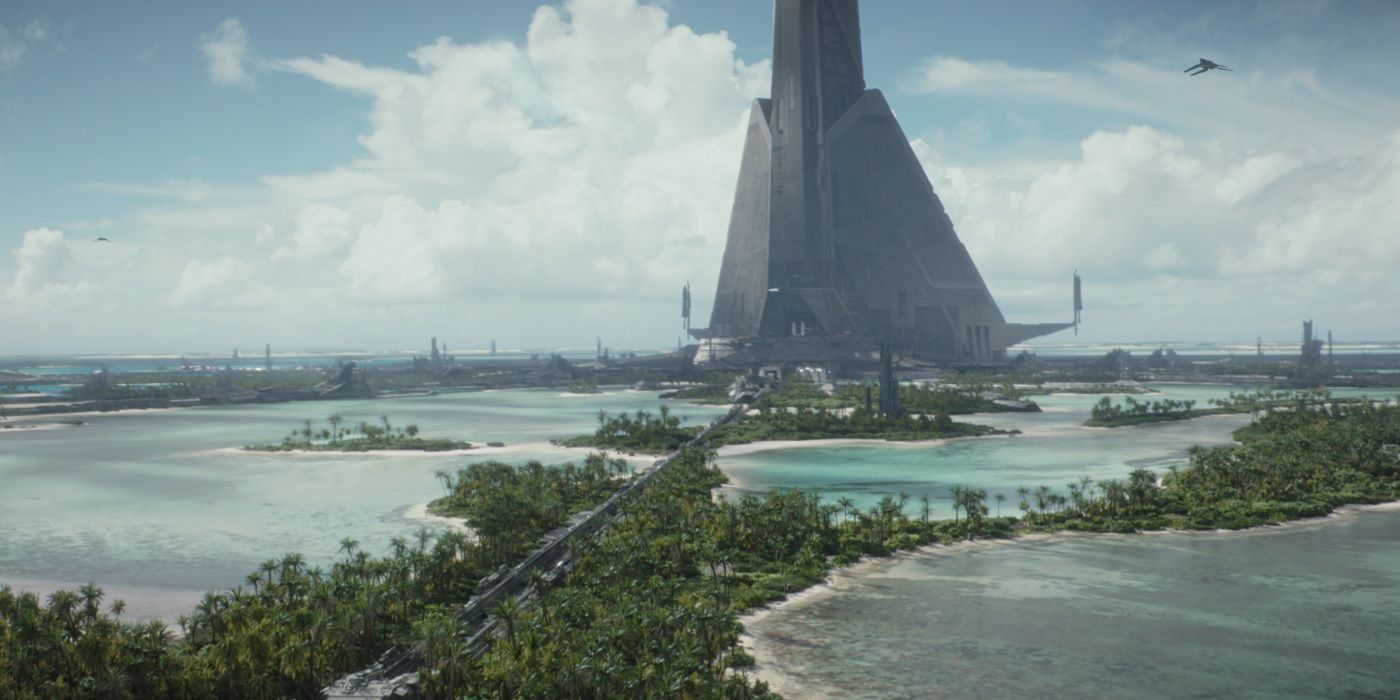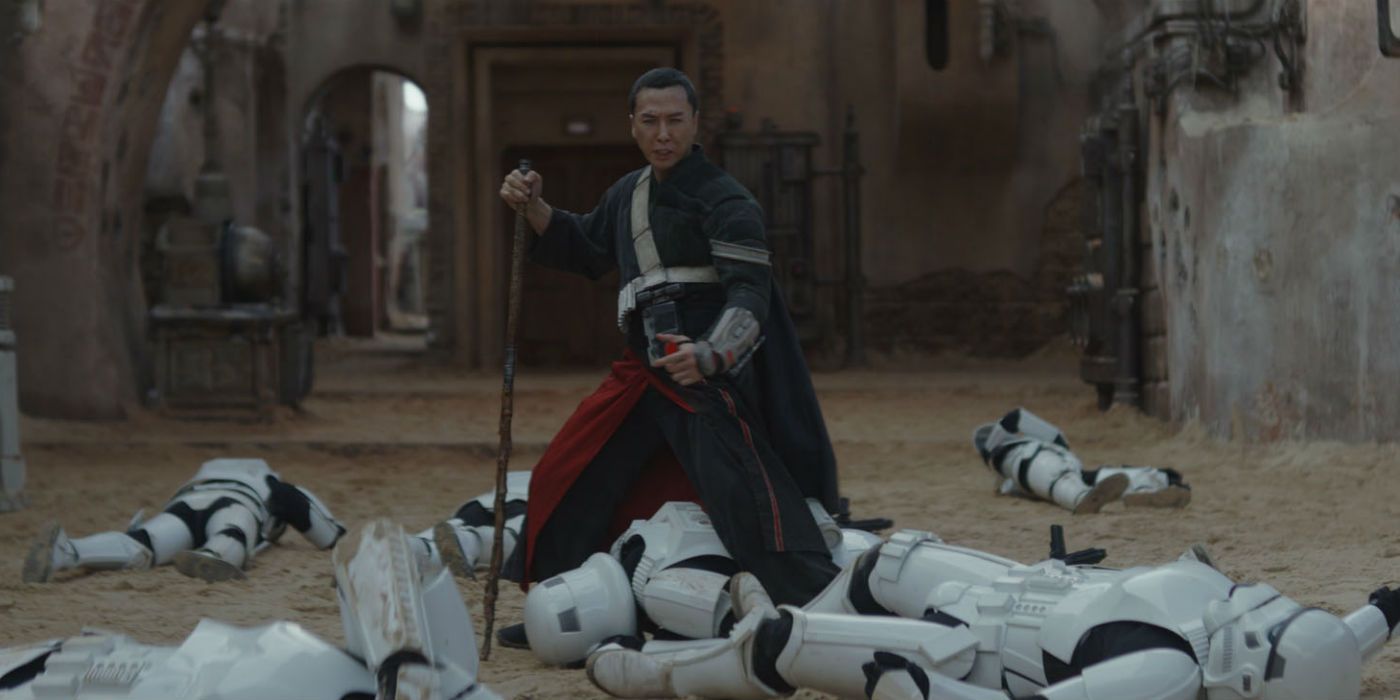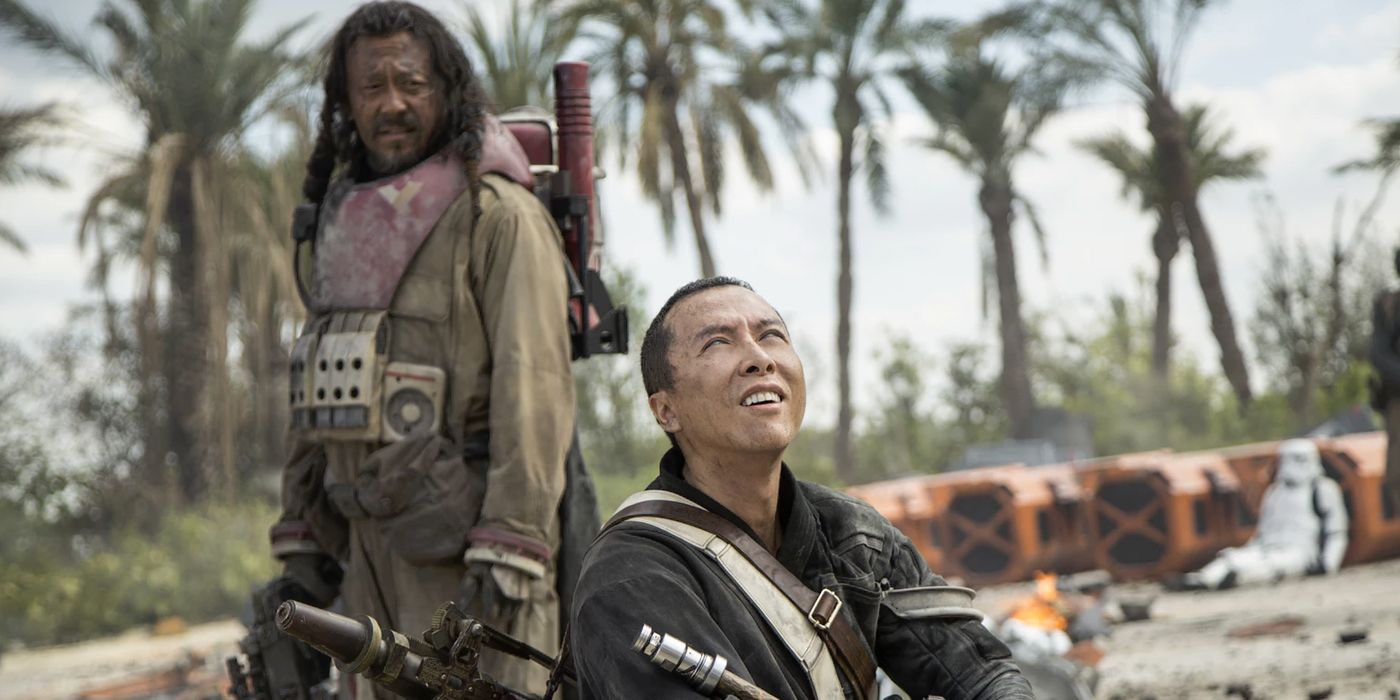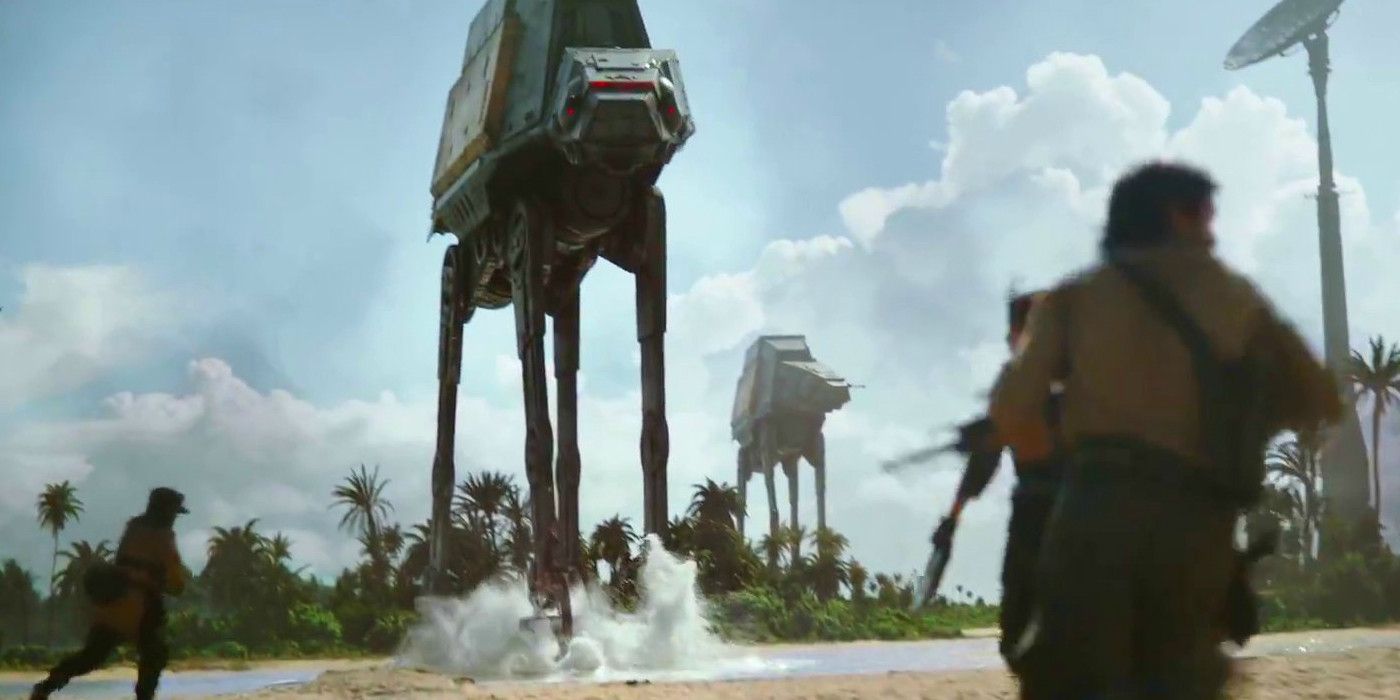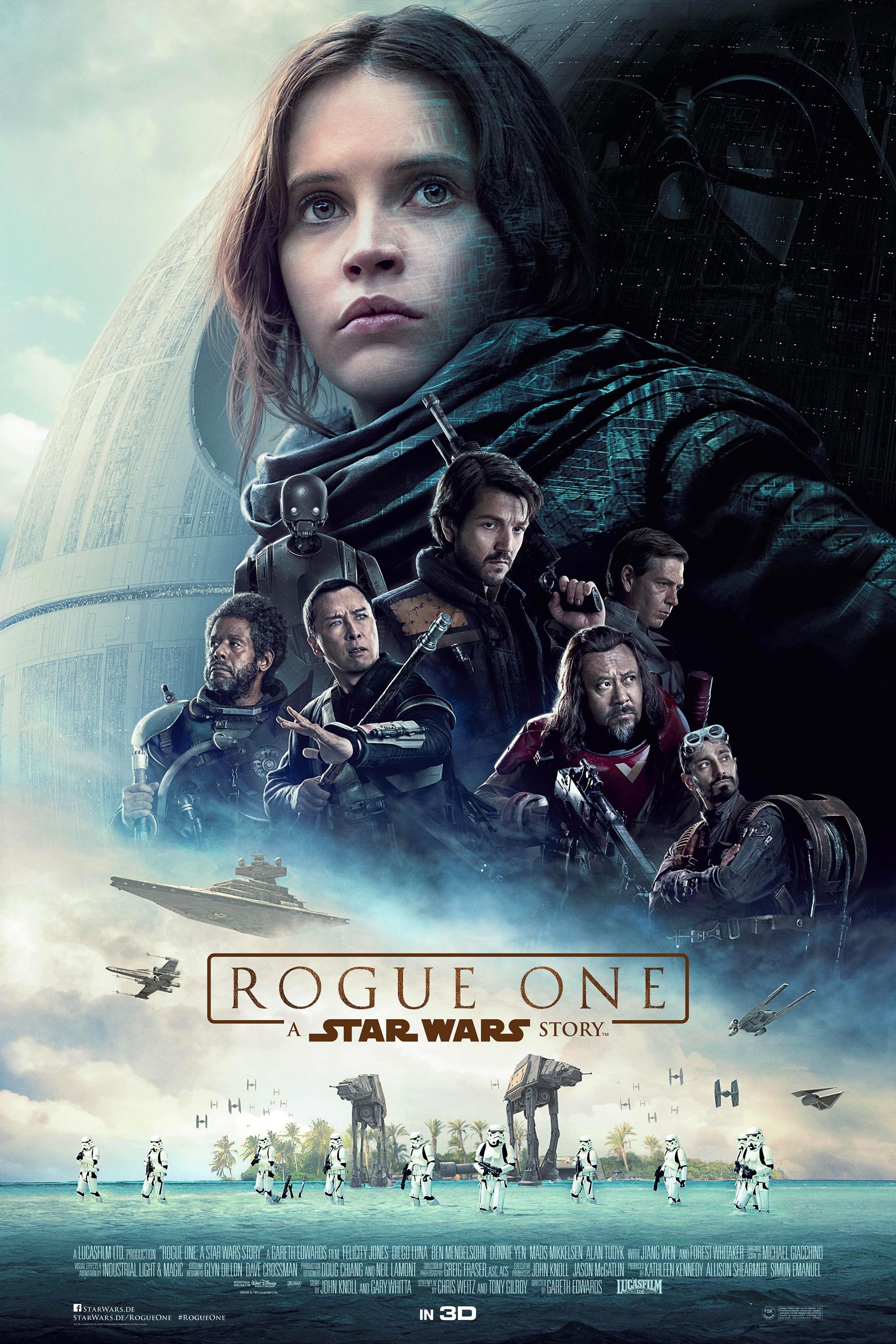Rogue One (2016) is the second Star Wars film, after The Force Awakens (2015), since Disney bought the franchise and Kathleen Kennedy became the president of Lucasfilm. While The Force Awakens was widely popular and took the title of the biggest opening weekend at $529 million, some felt that it was unoriginal, drawing heavily from the original Star Wars film and pandering to fans' emotional investment in the original trilogy. In contrast, Rogue One was an innovative film that took large cinematic and dramatic risks - its adventurous enthusiasm made it in some ways closer to the breakthroughs and surprises that the original trilogy offered audiences in the 1970s and 80s.
While it is possible to enjoy and appreciate both films, some fans prefer Rogue One's new take on the Star Wars universe to the polished blockbuster of The Force Awakens. Here are 15 Reasons Rogue One Is Better Than The Force Awakens.
SPOILERS ABOUND!
15. Stormtroopers Can Hit Things
In A New Hope (1977), Obi-Wan Kenobi tells Luke Skywalker that the Jawas on Tatooine couldn't have been killed by sand people because: "Only Imperial stormtroopers are so precise." Over the course of the Star Wars films, however, stormtroopers developed a completely different reputation among fans; they are comically known for being unable to hit things and people that were directly in front of them. While legions of villainous soldiers descend upon Luke, Leia, and Han, the heroes always have the upper hand. The Force Awakens continues in this tradition. It seems that no matter how many stormtroopers Rey, Finn, Han, and Chewie face, the audience never really believed that they were in real danger.
In contrast, Rogue One begins with Jyn's mother Lyra being shot by a stormtrooper - and in the third act, many of the heroes are shot and killed by stormtroopers on the planet Scarif. Not only does this make the threat of the Empire feel more real, but it creates a war zone where sacrifices and stakes are brought to the forefront.
14. This means people can die
The only major death in The Force Awakens is Han Solo, an a dramatic sacrifice that parallels Obi-Wan Kenobi's death from A New Hope. The ceremonial nature of this death, at the hands of his son, Kylo Ren, makes the sequence drawn out and seemingly inevitable. By the time that Kylo Ren kills Han Solo, the death is hardly surprising; afterwards, the rest of the movie lingers on Han Solo's death, a fond farewell to the beloved character. The structure of Star Wars focuses on heroes, defying the odds and surviving.
Rogue One, however, had an interesting problem - why do none of these characters appear in A New Hope if they are so central to the Rebellion? Why doesn't Jyn Erso explain the Death Star plans to Luke Skywalker instead of General Dodonna? Why doesn't Bodhi pilot an X-wing as Red Five? Rogue One made the bold choice that no Star Wars movie before did: all of the main characters die. Bodhi dies without much ceremony; K2-SO's sacrifice cannot be dwelled on; Chirrut and Baze die moments apart; Cassian's "fake out" death at the hands of Krennic still ends with him dying in a blast from the Death Star along with Jyn.
This is a powerful choice and a huge risk, and it pays off. These unsung heroes of the Rebel Alliance give their lives for the cause that they believe in, and it makes the film all the more meaningful.
13. Rogue One solves The Force Awakens pace problem
The Force Awakens wanted to include everything. The heroes begin running on Jakku and don't stop running until Rey offers Luke his lightsaber. Some sequences (such as the Rathtar chase that re-introduces Han Solo) do not contribute to the plot, and could easily be cut without affecting the plot. Rogue One takes time to establish not only what is going on, but how and why - the action sequences are paced and intercut with dialogue that establishes the characters' motivations. Of course, some characters in Rogue One are more developed than others, with the majority of the introspection devoted to Jyn Erso (Felicity Jones) and Cassian Andor (Diego Luna) - but both Jyn and Cassian have clearly made a choice to give their lives to the Rebel cause. Over the course of the film, they learn from the other's differing perspective, expanding their worldviews; their personal growth is central to the film and their mission's completion, because they could not succeed without the other. Rey and Finn are both swept up off their feet and all of their actions in The Force Awakens are reactionary. The biggest change to Finn's character occurs with his introduction when he chooses to defect and Rey remains relatively stagnant.
Rogue One's plot is also surprising and exciting. The film seems to follow a conventional plot arch, but when it reaches the climax of the final battle, it continues at a rocket pace (even as its protagonists die), ending with Vader in hot pursuit of Princess Leia. The energy of the final moments of Rogue One is palpable, exciting, and new.
12. Rogue One Embraces Star Wars Lore
Rogue One incorporated the Star Wars canonical universe that has been developing around the movies since Disney bought Lucasfilm. This includes references and nods to Star Wars Rebels and the inclusion of kyber crystals, one of the oldest Expanded Universe concepts. The Force-attuned crystals dates back to the "Kaiburr crystal" from Splinter of the Mind's Eye, a novel written by Alan Dean Foster in 1978 that predates The Empire Strikes Back (1980). Many fans of the expanded universe would already be well-versed in what kyber crystals are, but to see them appear and spoken on the theater screen was surprising, as Star Wars films usually do not delve into material from the expanded universe.
Rogue One also built on canonical concepts and introduced new canonical material, portrayals of the Guardians of the Whills on Jedha, the Imperial storage facility on Scarif, and a multitude of new understandings of the Force.
11. It uses forward thinking and experimental technology
In Rogue One, Industrial Light and Magic brought back Peter Cushing's likeness to play Grand Moff Wilhuff Tarkin. The images generated were highly complex and detailed, but drew mixed reactions from fans. Some fans were completely fooled by the image, not realizing that the character was being played by the digital likeness of a deceased actor. Others found the image distracting, pulling them out of the film sequence. It's possible that the digitally generated character fell into the "uncanny valley", a theory that nonhuman things that bear a great resemblance to humans cause an eerie feeling or even disgust; in that case, fans' rejection would come from him being too lifelike.
Regardless, Gareth Edwards' choice to resurrect the character of Grand Moff Tarkin digitally was a major innovation and risk. Industrial Light and Magic utilized a number of experimental visual effects in both the original trilogy and prequel trilogy (which relied heavily on green screen technology). Edwards and Rogue One follow in Lucas's vision for Star Wars, exploring new territory in regards to effects.
10. Darth Vader
Rogue One reminded audiences that Kylo Ren is no substitute for the Sith Lord Darth Vader. The fanboy Knight of Ren is certainly a different sort of villain, but Vader's presence and gravitas are felt in Rogue One. Additionally, Rogue One offered a modern look at how powerful and terrifying Darth Vader could be, putting his first scene in A New Hope in a new light. While Darth Vader's first scene in Rogue One was slightly off (the "choke on your aspirations" pun seemed out of place, even though Darth Vader says things like, "Apology accepted" after choking a man to death in the original trilogy), his second and final scene was disturbing and enthralling. Vader is a thing of nightmares, seemingly out of a horror film, as he destroys a group of Rebel troops effortlessly. This is a Sith at the height of his power, without a shred of hesitation or remorse.
9. It plays with genre
The original Star Wars is widely regarded as a pastiche, or a film that incorporates and imitates earlier works or genres. A New Hope pulls from samurai films, classic Westerns, ancient mythologies, and serial sci-fi flicks to weave together a new story. Rogue One continues this tradition by adding new genres to this framework. Rather than simply incorporating beloved elements from A New Hope, like The Force Awakens, Rogue One uses elements from modern war films and "heist" movies. The final Vader scene evokes both classic horror and sci-fi horror films. The result is a new perspective and viewpoint (both metaphorically and literally in terms of the cinematography) that has never been seen before in the Star Wars universe.
This promises new and exciting opportunities within the Star Wars expanded universe. As the Star Wars universe expands (at the rate of one film a year), there is room for new and creative additions to Star Wars canon.
8. It's political
Disney CEO Bob Iger said that Rogue One wasn't political, and that could not be farther from the truth. Iger's comments were in response to a backlash to screenwriter Chris Weitz's tweet: "Please note that the Empire is a white supremacist (human) organization." Rogue One does not have clear cut parallels to the most recent American presidential election and does not make political jabs at any of the candidate. But that does not make it apolitical. Much like the prequel trilogy, Rogue One explores the political climate of the time it was written and tackles political themes of war and resistance. It includes depictions of extremism, terrorism, fascism, and torture at the hands of Saw Gerrera, who was a member of the Rebel Alliance. Different characters justify different methods and modes of violence, and the audience can take the lessons learned in the film and apply them to the political landscape of our own world.
7. It explores the grey between good and evil
Along with its political bend, Rogue One complicates the classic Star Wars story of good versus evil. Both the original and prequel trilogies explore the idea of how to defeat evil without becoming evil yourself. Anakin falls to the dark side of the Force in his quest to stop death, whereas Luke truly becomes a Jedi when he rejects violence and the dark side of the Force. However, before Rogue One, this question was presented as binary. Someone is either good or evil, and they can oscillate between the two, but there is no liminal or inbetween space. The Force Awakens re-enforces this binary: there is good and there is evil.
Rogue One chooses to explore that space. While the primary villains of Rogue One are unapologetically evil - Tarkin, Krennic, and Darth Vader - the heroes struggle to make sense of what is the "right" or "just" course of action against the Empire. Cassian Andor assassinates an informant and is later ordered to kill Galen Erso. Cassian chooses to disobey his superiors and follow his conscience. However, he tells Jyn that this is not because he regrets the things that he has done, but because they are only justified if he gives everything to the cause that he believes in. In contrast, Jyn is a reluctant hero, uninterested in anything beyond her own survival until her father's message makes the Rebellion personal. These two flawed characters have navigated the dark galaxy that the Empire has created, and both have made mistakes along the way, but that doesn't prevent them from being heroes.
6. It's a mature Star Wars
Rogue One is dark - but it's also more philosophical and presents more complicated version of the Rebellion and resistance tactics than any other Star Wars film. The ideas that the film presents are mature, and the decision to end the film with the deaths of its protagonists is bold.
In one scene that serves as the emotional lynchpin of the film, Jyn accuses Cassian of being no better than a stormtrooper who mindlessly follows orders; he retorts back that he has been fighting since he was six and she cannot take the moral high ground in a war that she has avoided. Cassian angrily reminds Jyn that she does not have a monopoly on loss, and that every one of them has experienced loss at the hands of the Empire. The scene includes reflecting on the bitterness of war (and the potential of child soldiers), the moral compromises that individuals are forced to make, and the painful loss that binds together the different people who make up the Rebellion. It is hard to imagine these ideas and concepts presented in The Force Awakens. However, they are at the core of Rogue One, and the loss that drives the members of the Rogue One mission helps them to build a path towards hope.
5. The visuals are stunning
Gareth Edwards' vision for Rogue One explores new territory, and that includes creating new and stunning visuals. The color palettes that appear in the opening sequence of Krennic walking to Galen's farm, Jedha City, Darth Vader's castle on Mustafar, and Scarif are striking and bold. The starship battle above Scarif includes the Hammerhead Corvette pushing one Star Destroyer into another over the planet. In his final moments, Krennic sees the Death Star on the horizon. Darth Vader ignites his lightsaber as the lights flicker on the Rebel ship. Jyn and Cassian are enveloped in a wave of energy from the Death Star blast. These images are dynamic and memorable, because Edwards is showing audiences images that they have never seen before.
The Force Awakens is enjoyable, but Edwards presents an artistic frame that heightens the images in Rogue One. The mise en scene that Edwards builds through color, lighting, and balance is sophisticated and eye-widening.
4. It took us to new places
The Force Awakens took Star Wars fans to new (but strangely familiar) places. Jakku does not seem differentiated from Tatooine, and the desert worlds could easily be interchanged. Similarly, Starkiller base is covered with snow, and feels similar to the ice planet Hoth in The Empire Strikes Back (1980).
Rogue One builds new worlds that look and feel different from anything we have ever seen in Star Wars. Jedha is another desert world, but the cliffs that Saw Gerrara and his Partisans live in or the inhabitants of Jedha City (not to mention the fallen Jedi statues) help to show a different cultural atmospherre that is clear and distinct from Mos Eisley. Similarly, Grange (where Galen Erso's family is hiding at the beginning of the film) and Scarif (where the final fight for the Death Star plans occurs) are rich and beautiful landscapes. Scarif was shot in the Maldives, showcasing a tropical world.
3. The plot is not just a repeat of A New Hope
Many fans have noted that The Force Awakens shares a number of similarities with A New Hope, although J. J. Abrams defended the film against claims that it was a ripoff. Still, the formula of The Force Awakens does bear some deep similarities. To name a few, it features an unlikely Force-sensitive hero who accidentally gets swept up from a desert planet to join the Rebel Alliance (sorry, "Resistance") against the First Order; it also ends with an X-wing assault on a superweapon of enormous planet-destroying, galaxy-threatening potential... when will the villains learn that this isn't an effective strategy?
In contrast, while Rogue One is temporarily related to A New Hope, it explores new dimensions of Star Wars. From its opening that used a flashback instead of an opening crawl to its unconventional ending, Rogue One bends the rules of Star Wars storytelling. The result is a fresh and compelling new story that fans have never seen before.
2 It's not trying to set up another two movies
Perhaps the best thing about Abrams' The Force Awakens is the promise of Episode VIII. The film sets up a cast of characters - Finn, Rey, Poe - who can continue going on adventures against the evil General Hux, Kylo Ren, and Captain Phasma. Abrams created a jumping off point for the new Star Wars sequel trilogy. On the flip side, The Force Awakens is not, in comparison to Rogue One, a satisfying stand-alone movie. The Force Awakens was forced to be forward-thinking to the years and movies ahead, and that was apparent in the final cut.
In contast, Rogue One tells a succinct story that positions itself within the Star Wars galaxy far, far away without being a preview for a newer, better, upcoming film. Kathleen Kennedy has stated that regardless of Rogue One's performance, it will not have a sequel; as the first Star Wars anthology film, it is meant to stand alone. In the age of never-ending blockbuster sequels (a trend that developed in large part because of the original Star Wars trilogy), Rogue One accomplishes something that feels seemingly impossible: it ends.
1. It takes risks
Rogue One made big and bold choices, and some were more successful than others. In comparison, The Force Awakens rehashes much of the same terrain and archetypes that appear in the orignal Star Wars. We see this all too often; a number of large movie franchises choose to tell and retell the same story instead of trying something new. In this way, Rogue One will stand out in the years to come. While some of the risks taken have been met with mixed success, Rogue One uses new technology, explores new planets, introduces new characters, and adds new genres and styles to the Star Wars pastiche. Since the Star Wars franchise has a devoted set of fans who will go to support the movies regardless of the stars and director, Star Wars movies should take risks. That's what made A New Hope special in 1977 and what makes Rogue One special in 2016.
---
Do you think that Rogue One was better than The Force Awakens? Join the conversation in the comments!

